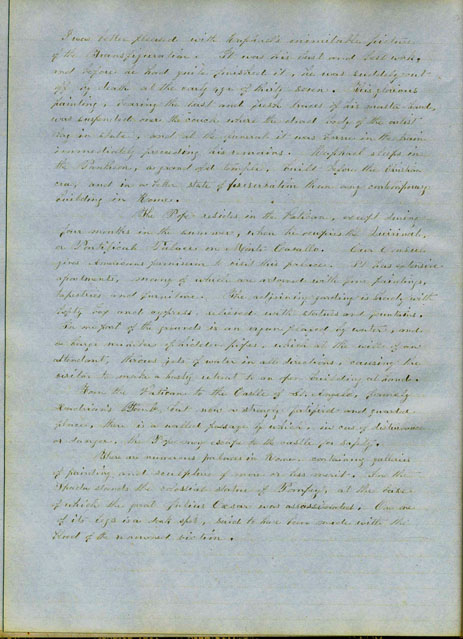Travel
Diary of Mrs. R.P. Eaton:
Europe,
Egypt, and Palestine, ca. 1857

The Pope resides in the Vatican, except during four months in the summer, when he occupies the Quirinal, a Pontifical Palace on Monte Cavallo. Our Consul gives Americans permission to visit this palace. It has extensive apartments, many of which are adorned with fine paintings, tapestries and furniture. The adjoining garding is shady with lofty box and cypress, relieved with statues and fountains. In one part of the grounds is an organ played by water, and a large number of hidden pipes, which at the will of an attendant, throws jets of water in all directions, causing the visitor to make a hasty retreat to an open building at hand.
From the Vatican to the Castle of St. Angelo, formerly Hadrian’s Tomb, but now a strongly fortified and guarded place, there is a walled passage by which, in case of disturbance or danger, the Pope may escape to the castle for safety.
There are numerous palaces in Rome, containing galleries of painting and sculpture of more or less merit. In the Spades stands the colossal statue Pompey, at the base of which the great Julius Caesar was assassinated. On one of its legs is a dark spot, said to have been made with the blood of the renowned victim.